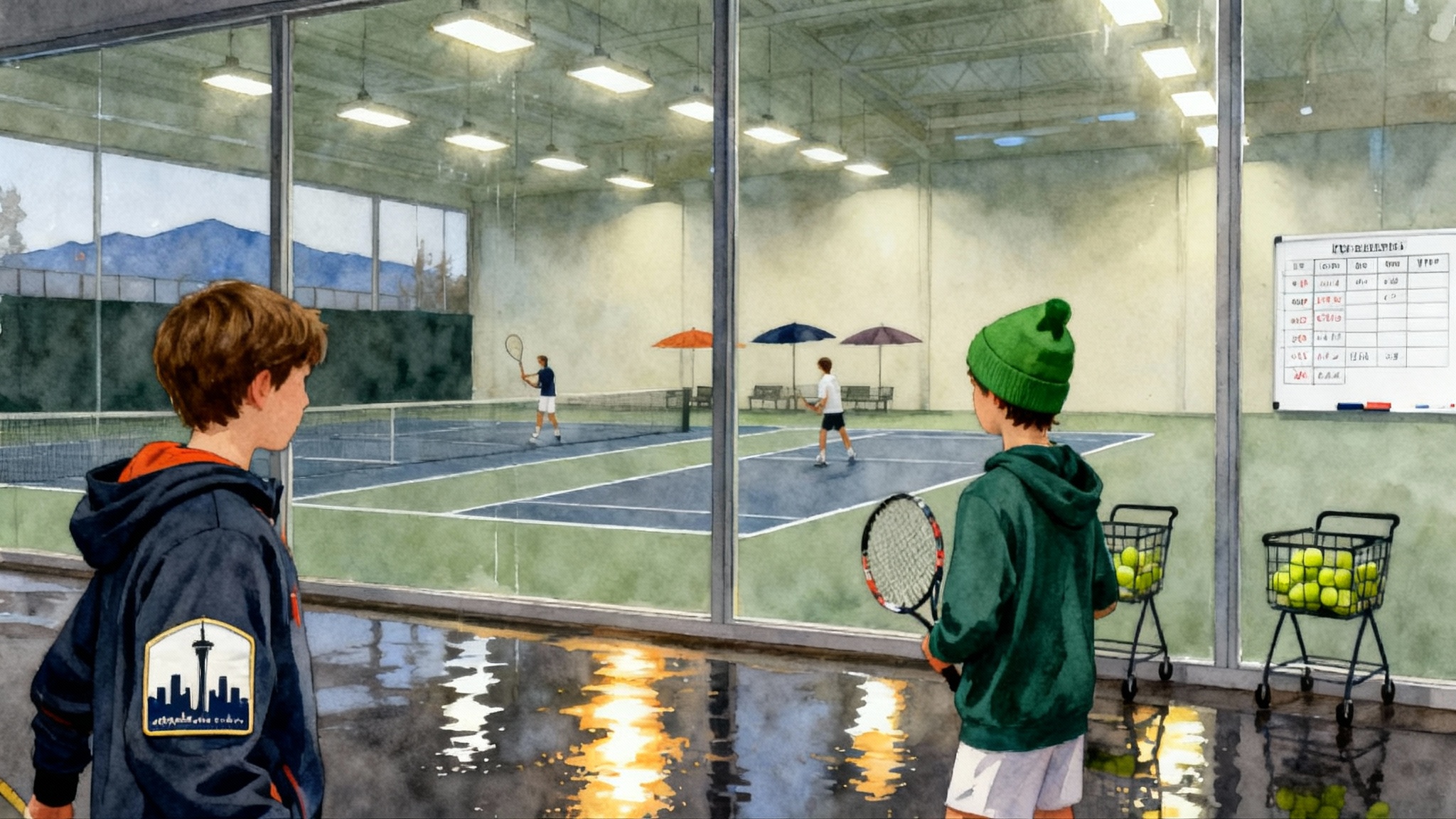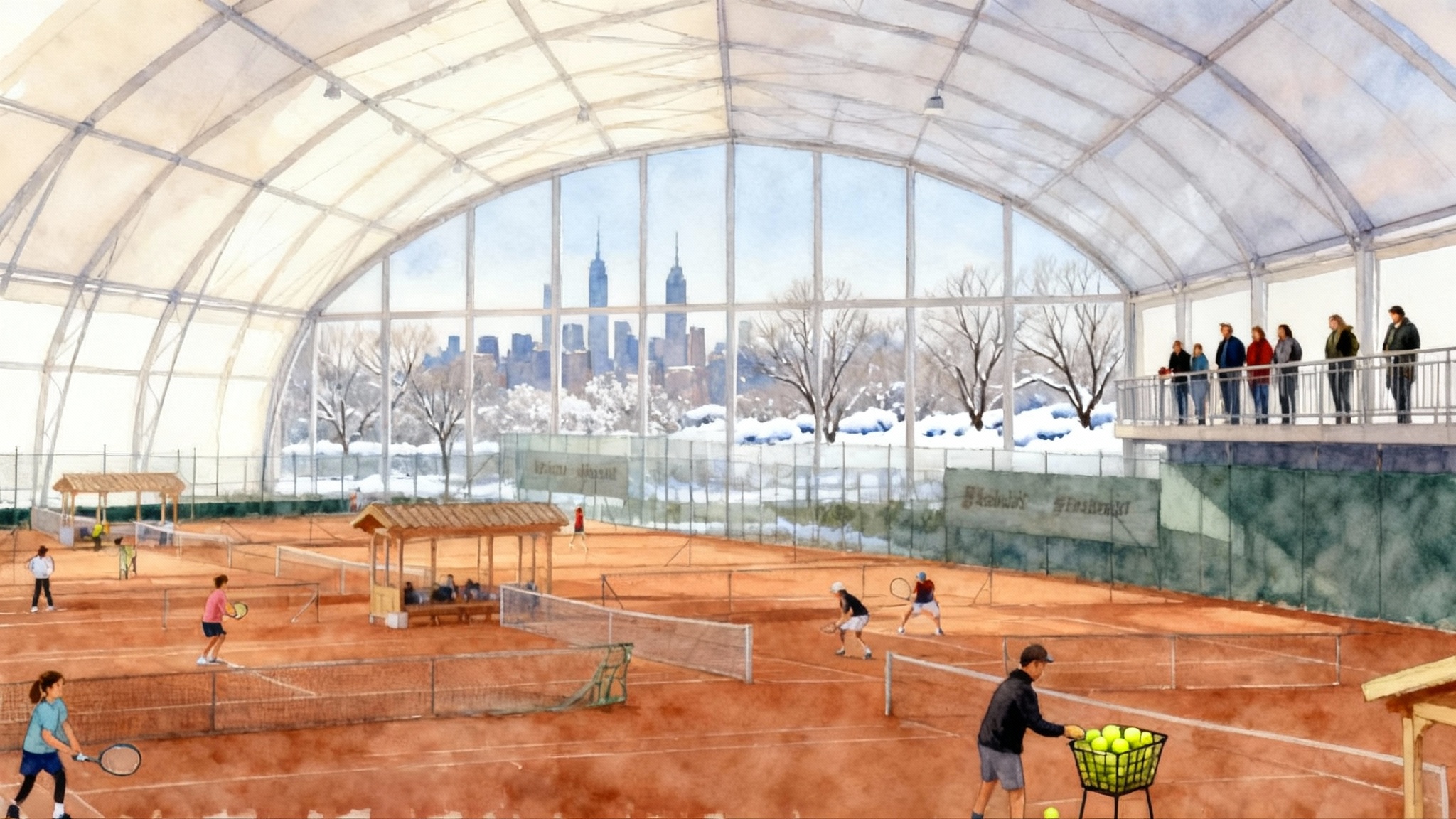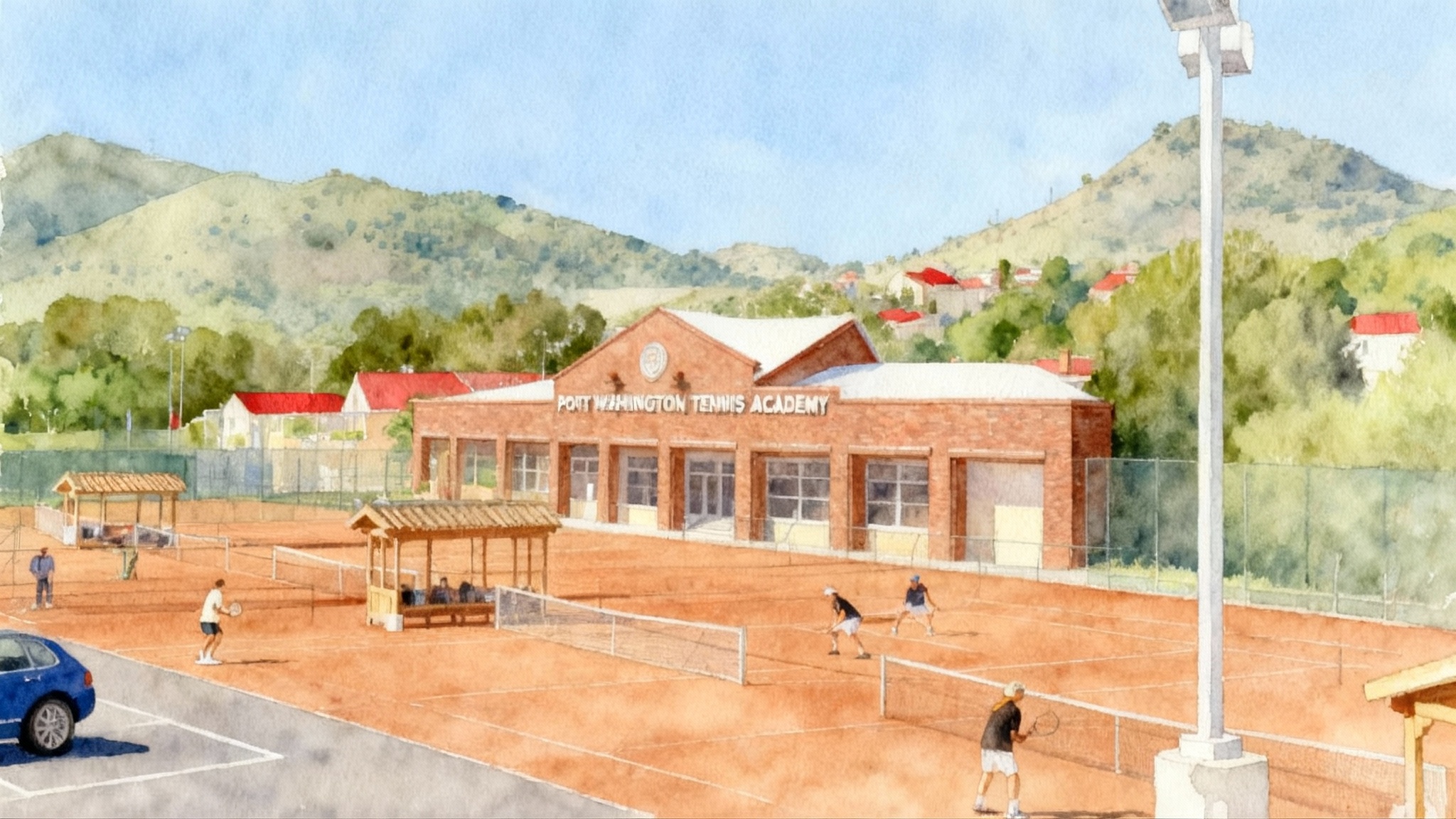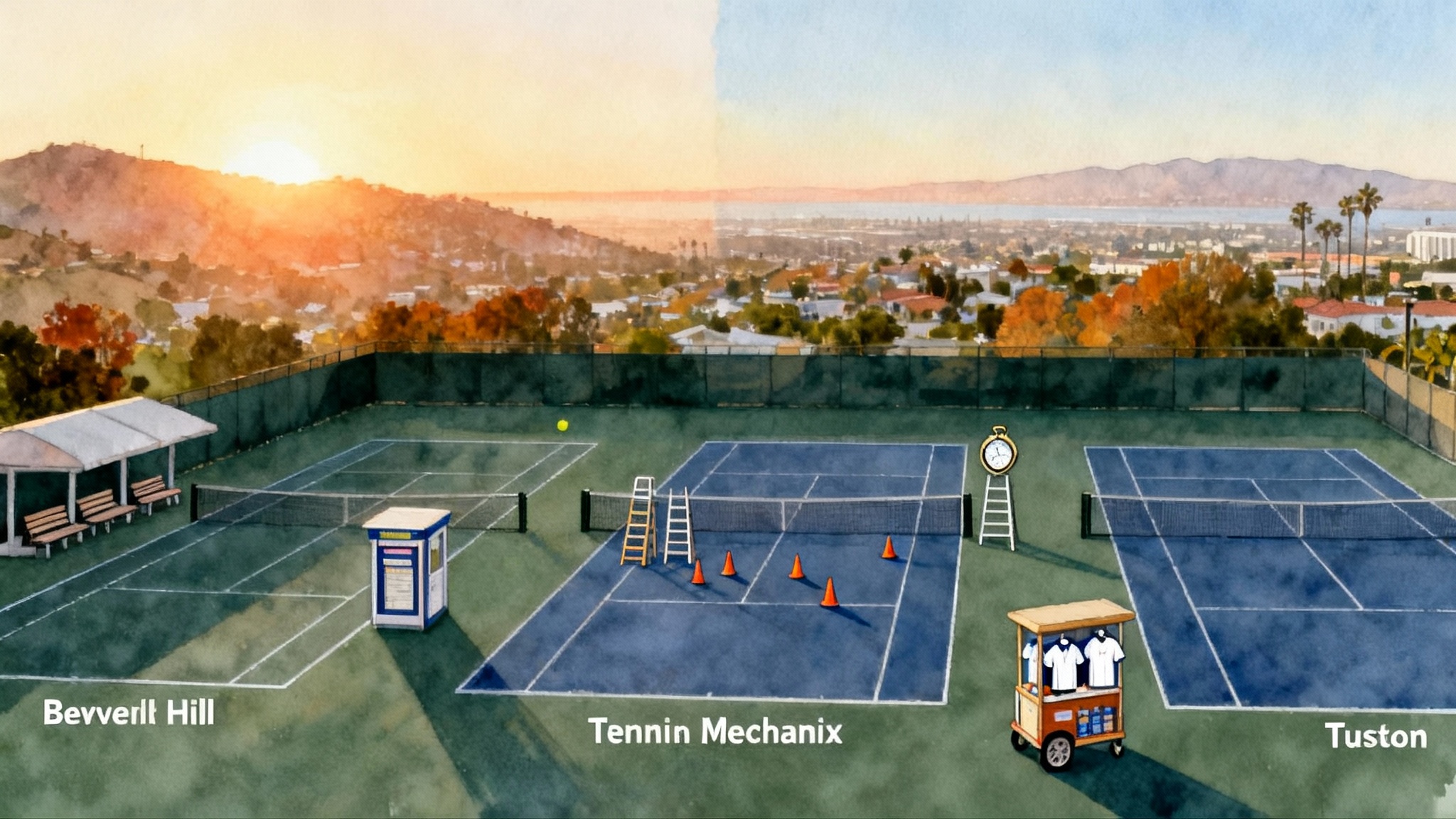Best Atlanta Tennis Academies 2025–2026: Parent Guide
A clear, side by side guide to metro Atlanta’s junior tennis academies. Compare cost bands, weekly training loads, court surfaces, UTR match play, recruiting help, boarding vs day options, commute tips, and sample plans by UTR.

How to pick the right Atlanta academy for 2025-2026
Metro Atlanta might be the best junior tennis market in the South. That is great for choice, and tricky for families who need a fit that works for goals, budget, and commute. This guide compares the top programs most Atlanta parents ask about, then gives you sample weekly plans by Universal Tennis Rating level, county by county commute advice, and what to ask during a trial.
We focus on the factors that actually move the needle for development and sanity at home. Cost, training schedule, match play volume, surface mix, college guidance, boarding vs day, and alignment with the United States Tennis Association Southern tournament calendar. If you are also scanning other markets, see our cross‑region benchmark in the Best NY and NJ tennis academies.
The six decision pillars
- Cost band and what it includes: monthly or semester tuition, strength training, performance services, and match coaching.
- Weekly training density: days on court, fitness blocks, and built in verified match play.
- Surface mix: access to clay, hard, and any indoor cover for rain or winter.
- Verified match play volume: number of UTR verified matches you can realistically get without burning the family calendar.
- College pathway support: credible coach advocacy, video, and schedule planning.
- School and logistics: day only vs boarding, proximity to your county, and a plan that matches the USTA Southern calendar.
Program by program snapshot
Below are the Atlanta area programs most families compare first. Details change by season, so treat what follows as a parent focused snapshot to help you shortlist and ask sharper questions on your tour.
GAC High Performance Tennis Academy, Norcross (Gwinnett)
- Profile: A school based high performance program located at Greater Atlanta Christian School with academics on the same campus. GAC is unusual locally for offering supervised on campus housing for academy players, which matters for out of state and international families. For a deeper look at the model and facilities, see our GAC High-Performance Tennis Academy overview.
- Cost band: Semester based pricing for age groups. As a reference point from recent fall postings, 10U and 12U drill tracks billed across August to December worked out to roughly low to mid four hundreds per month for three days per week. High Performance is invitation only and priced separately. Ask for a written breakdown of what is included in HP vs Pre Academy.
- Training cadence: Daily on court with integrated fitness during the school week for full time HP players. After school blocks for Pre Academy. Video analysis and mental skills are woven into the week.
- Surface mix: Outdoor hard as the base, with access to indoor options for select programming and private instruction on campus. That reduces rainouts during peak training season.
- UTR match play: Frequent in house UTR verified match days for ratings stability, plus planned entries for Southern and National events. Ask how many verified matches per month your athlete will average across fall and spring.
- College support: Staff emphasize college outcomes, with coach advocacy, video capture, and guidance on building a schedule that supports recruiting windows.
- Calendar alignment: Staff build individualized tournament calendars keyed to Southern Level 6 and 5 events during school windows and heavier travel blocks after exams.
- Best fit: Families seeking an integrated school plus tennis model, or boarding day hybrid, and a predictable training day that wraps by late afternoon.
Tenacity Tennis Academy, Marietta (Cobb)
- Profile: East Cobb based community academy with flexible after school drill groups. Good fit for multi sport or school heavy players who need value pricing and a manageable drive. Read the Tenacity Tennis Academy profile for current schedules and program tiers.
- Cost band: As of fall 2025, kid drill pricing shows four sessions per month for about two hundred and fifty dollars for one day per week, three hundred and fifty for two days, and an unlimited option at six hundred that covers added side practices. This is one of the lower cost paths into frequent reps for motivated players.
- Training cadence: 90 minute after school drills, with a three hour option on select days for serious players. Private lessons and open play available.
- Surface mix: Outdoor hard courts at East Cobb Swim and Tennis.
- UTR match play: Uses weekend match play, local round robins, and nearby Cobb events to build verified results. Ask for a monthly plan that targets two to four verified matches without missing school.
- College support: Focus is development first. Families aiming at college should ask for a recruiting checklist and coach connection plan by sophomore year.
- Calendar alignment: Leans on nearby Cobb hosts such as Harrison Tennis Center and Laurel Park for Level 7 and 6, then adds Level 5 travel blocks in summer.
- Best fit: Budget conscious families that want lots of balls fed, a friendly culture, and easy access from East Cobb, Walton, Lassiter, Pope, or Wheeler districts.
Tennis Academy of the South at Sandy Springs Racquet Center, Sandy Springs (North Fulton)
- Profile: One of Atlanta’s longest running high performance programs, based at a 24 court city complex with 20 hard and 4 clay courts. Central to Buckhead, Sandy Springs, and Dunwoody.
- Cost band: Mid tier monthly tuition for performance tracks, with add ons for fitness and privates. Ask for a three tier quote that separates drill blocks, strength, and tournament coaching.
- Training cadence: After school performance and high performance squads four to five days per week, with weekend match play and clay day rotations to build defensive skills.
- Surface mix: Reliable access to clay and hard, plus lights for winter afternoons. Clay volume is a quiet edge for building point construction and movement.
- UTR match play: Regular verified match days on site and at partner centers across North Fulton.
- College support: Deep Atlanta alumni network. Ask for examples of recent placements and how advocacy emails and calls are handled during junior and senior years.
- Calendar alignment: Hosts and attends Southern Level 6 and 5 tournaments, with a predictable cadence across spring and early fall.
- Best fit: Players in North Fulton or the Perimeter area who want clay exposure, a large peer group, and tournament depth without a long drive.
Universal Tennis Academy, multi site across metro Atlanta
- Profile: A large coaching group that manages programming at multiple city and park centers from Buckhead to Brookhaven to Piedmont Park. The appeal is breadth of locations and coach depth.
- Cost band: Mid tier group pricing that varies by site. Because location matters, request site specific pricing for your home center.
- Training cadence: Seven day programming across sites allows you to stitch together a weekly plan that fits school and traffic. Useful if you need Monday in town and Thursday in Brookhaven.
- Surface mix: Mostly hard courts, with some sites offering clay.
- UTR match play: Many UTR verified events across the network. Ask for a site calendar with target events for your rating band.
- College support: Recruiting help varies by site and coach. Clarify who will own communications and video snippets.
- Calendar alignment: Hosts frequent Level 7 and 6, with select Level 5s and travel teams in summer.
- Best fit: Families that want flexibility and the chance to try coaches and sites before committing.
Ginepri Performance Tennis at Olde Towne Athletic Club, East Cobb/Marietta (Cobb)
- Profile: High performance environment associated with former world number 15 Robby Ginepri. The club has six hard courts, four clay courts, and two covered courts to reduce rainouts. Strong culture around habits, fitness, and competitive sets.
- Cost band: Upper mid to high depending on track, with fitness integration and limited player to coach ratios on elite days.
- Training cadence: After school performance groups with optional morning fitness blocks on select days. Clay day rotations and structured point play.
- Surface mix: Hard, clay, and partially covered courts. That mix helps players prepare for the Southeastern spring clay swing without losing reps during wet weeks.
- UTR match play: Emphasis on weekly verified sets and tight score management to build rating reliability.
- College support: Strong personal advocacy. Ask for a written recruiting timeline for UTR 9 to 11 players.
- Calendar alignment: East Cobb location is ideal for Harrison and Laurel Park events, with planned Level 5 travel blocks in late spring and summer.
- Best fit: Ambitious players targeting college who value a tight group culture and coach continuity.
Agape Tennis Academy, DeKalb Tennis Center and City of Atlanta racquet centers
- Profile: A large public facility operator with seven day junior programming and frequent events. Especially convenient for Decatur, Druid Hills, Brookhaven, and in town families.
- Cost band: Value to mid tier, with lots of entry points for Red, Orange, and Green ball, and performance options as players progress.
- Training cadence: Group classes seven days per week, with mental skills sessions and match play days published by season.
- Surface mix: Primarily outdoor hard courts across city centers, with select clay access at specific locations.
- UTR match play: Regular verified events at multiple sites. Easy way to get rating reliability without long drives.
- College support: Varies by site. For serious players, pair Agape training with a dedicated private coach who will manage your college plan.
- Calendar alignment: Frequent Level 7 and 6 in town, with summer Level 5s a short drive away.
- Best fit: In town families who need flexible scheduling, and newer players ramping into tournament tennis.
Cost bands in plain numbers
Use these bands to compare apples to apples. Prices below refer to training blocks, not private lessons, and are based on current public listings and recent Atlanta quotes. Expect variation by coach seniority and season.
- Value band, roughly 200 to 400 dollars per month: two to three 90 minute group sessions per week, minimal fitness. Typical of community academies and public centers.
- Mid band, roughly 400 to 800 dollars per month: three to four group sessions weekly, basic fitness, periodic verified match play. Typical of large multi site academies or clay access facilities.
- High performance band, roughly 800 to 1,500 dollars per month: four to five sessions, integrated strength and mobility, frequent verified matches, tournament coaching included or discounted. Typical of curated performance tracks and private clubs.
- Full time school integrated programs, varies widely, often quoted per semester: daily on court plus fitness during school hours, customized academics, and tournament travel planning. Best suited for players already in frequent Southern and National competition.
What to ask when you compare cost:
- What exactly is included each week, on court and off court.
- How many players per court in my child’s track.
- How many verified UTR matches per month are built into tuition.
- What is the policy for rain, makeups, and tournament weeks.
Commute by county: a parent reality check
- Cobb: If you live near East Cobb, the triangle of Olde Towne Athletic Club, Harrison Tennis Center, and Laurel Park keeps most training and UTR play within 20 minutes. Avoid cross county rush hour into Sandy Springs unless you can train after 6:30 p.m.
- Gwinnett: Norcross, Peachtree Corners, and Duluth families can reach GAC and nearby public centers quickly. Cross river trips to North Fulton are slow in the afternoon. Schedule morning privates or use Saturday sparring to sample those sites.
- North Fulton: Sandy Springs, Dunwoody, Roswell, Alpharetta can live at the Sandy Springs Racquet Center and add Buckhead or Brookhaven days without hitting downtown traffic.
- In town Atlanta and DeKalb: Decatur, Druid Hills, Virginia Highland, and Midtown benefit from the city racquet centers and DeKalb Tennis Center. Plan tournament weekends north or east for variety, but let weekdays be about proximity and reps.
Parent tip: Map your child’s actual bell schedule against the academy’s daily start time, then drive the route once at that hour. Losing 25 minutes to traffic twice per week is 100 minutes of homework or sleep.
Aligning with the USTA Southern calendar
Your athlete’s training should move in rhythm with the United States Tennis Association Southern calendar. Southern publishes a rolling 2025 junior schedule with events at Level 7 through Level 1. Check the Southern junior tournament calendar monthly, then plan backwards.
- Fall, August to November: School is back, so use local Level 7 and 6 events two or three weekends per month. Verify two to six UTR matches in house.
- Winter, December to February: Lean into technical blocks, serve volume, and fitness. Use indoor or covered courts when possible and keep one UTR verified set per week to maintain rating reliability.
- Spring, March to May: Mix Level 6 and 5 events that do not collide with exams. This is the window to stress test point patterns and fitness under wind and pollen. Clay rotations are useful here.
- Summer, June to July: Travel windows for Level 5 and up. Pair tournament weeks with lighter training the week after. Families with limited travel budget can stack two local events in a two week block and get similar match counts.
What to ask your academy: Show me an 8 to 12 week plan that delivers 12 to 20 verified matches without missing school deadlines. Ask for specific weekends and backup options.
Trial and assessment, done right
- Watch a full session: Count actual ball strikes and serve reps, not just energy. For performance tracks, 350 to 500 contacts per 90 minutes is a healthy target.
- Ask about progress markers: What will change in the next eight weeks in serve speed, serve percentage, and rally stability. Get specific.
- Check peer group fit: Your child should play sets with two to four peers within 0.8 UTR points. Wider gaps can help for learning, but not every day.
- Fitness integration: Look for planned mobility and sprint work, not just burpees when it rains. Ask who writes the program and how soreness is managed on tournament weeks.
- Coach communication: Who is your point person, and how often will you get a two minute voice memo or short video clip about progress.
Sample weekly plans by UTR level
Use these as templates and adjust for school load and commute. The hours below include warm up and brief mobility work.
UTR 3.0 to 4.9, building fundamentals
- Monday: 90 minute technical group lesson, forehand and backhand shapes, 20 minutes of serves at the end.
- Wednesday: 60 minute private lesson, serve plus first ball patterns.
- Friday: 90 minute group with footwork ladders and cross court consistency goals.
- Weekend: One verified set or a short Level 7 local event. If no event, play two sets with a peer within 0.5 UTR.
- Total: About 5 to 7 court hours, plus 2 short mobility sessions at home.
UTR 5.0 to 6.9, entering regular tournament play
- Monday: 90 minute performance group, rally tolerance, depth windows.
- Tuesday: 45 minute strength and mobility, focus on hips and shoulders.
- Wednesday: 90 minute group, serve plus +1 pattern, return plus +1.
- Friday: 60 minute live ball point play and tiebreakers.
- Weekend: One verified match, plus either a Level 7 or 6 event every other weekend.
- Total: About 8 to 11 court hours, two short strength sessions.
UTR 7.0 to 8.9, competing at Southern Level 6 and 5
- Monday: 2 hours, high intensity drilling, plus 20 minutes of serves.
- Tuesday: 60 minute strength, 20 minute mobility and breath work.
- Wednesday: 90 minutes of heavy live ball, cross to line patterns.
- Thursday: 60 minute private or video session to tune patterns.
- Friday: 90 minutes of verified match play sets.
- Weekend: Level 6 event or two verified matches. One full rest day.
- Total: About 12 to 15 court hours, two to three fitness blocks.
UTR 9.0 to 10.5, targeting college tennis
- Monday: 2 hours on court, 45 minute strength, arm care protocol.
- Tuesday: 90 minutes point construction and pattern sparring, 15 minute serve metrics.
- Wednesday: 60 minute verified set, short video review.
- Thursday: 2 hours on court, with 30 minutes returns and second serve pressure.
- Friday: 45 minute mobility, 20 minute film and mental rehearsal.
- Weekend: Level 5 or two verified matches, coach debrief on Sunday night.
- Total: About 14 to 18 court hours, three fitness blocks, one full rest day.
Boarding vs day, what matters in Atlanta
Most Atlanta academies are day programs. The exception is GAC, which offers supervised on campus housing tied to its school based model. If you are relocating for tennis, that simplifies guardianship, transportation, and nutrition. If you are local, day programs are more flexible and keep costs down. Always ask who handles laundry, meals, and tournament transport on boarding weeks, and what happens during school breaks.
Which program fits which profile
- The integrated scholar athlete: Choose GAC for a predictable school day, on site fitness, and a boarding day safety net.
- The value hungry competitor: Choose Tenacity or Agape to maximize on court reps per dollar, then add a private lesson and a planned verified match each week.
- The clay court learner: Choose Tennis Academy of the South at Sandy Springs for 4 clay courts in the weekly rotation, or Ginepri Performance for clay plus covered courts to cut rainouts.
- The flexible commuter: Choose Universal Tennis Academy if you want multiple sites and a deep match play calendar without changing coaches. For West Coast comparisons on structure and pricing, skim the Best Bay Area academies guide.
Final checklist before you commit
- Drive time at the actual start hour.
- Three month calendar of events with target match counts.
- Written cost breakdown that separates group, private, fitness, and tournament coaching.
- Peer group list for your child’s UTR band.
- One week trial with a simple rubric for serve percentage, rally length, and between point routine.
A smart close in a crowded city
Atlanta gives you something rare in junior tennis, a deep menu of credible coaches within a 45 minute ring. Use that depth with intent. Map the USTA Southern calendar, pick the commute you can live with on school nights, and buy verified match play the same way you buy groceries, consistently and close to home. Start with two programs that fit your county and goals, ask for a short trial, then commit for a season. The right academy is the one that gets your athlete more quality reps, more verified matches, and more sleep on school nights, all year long.








